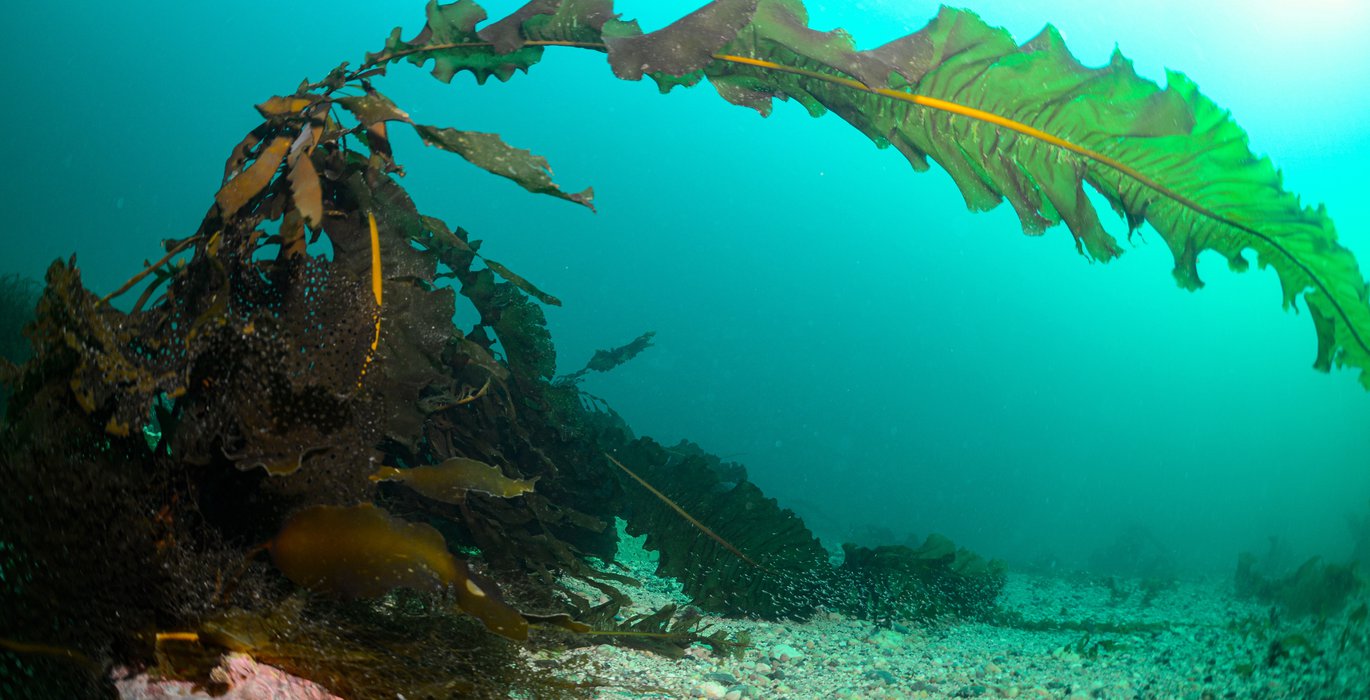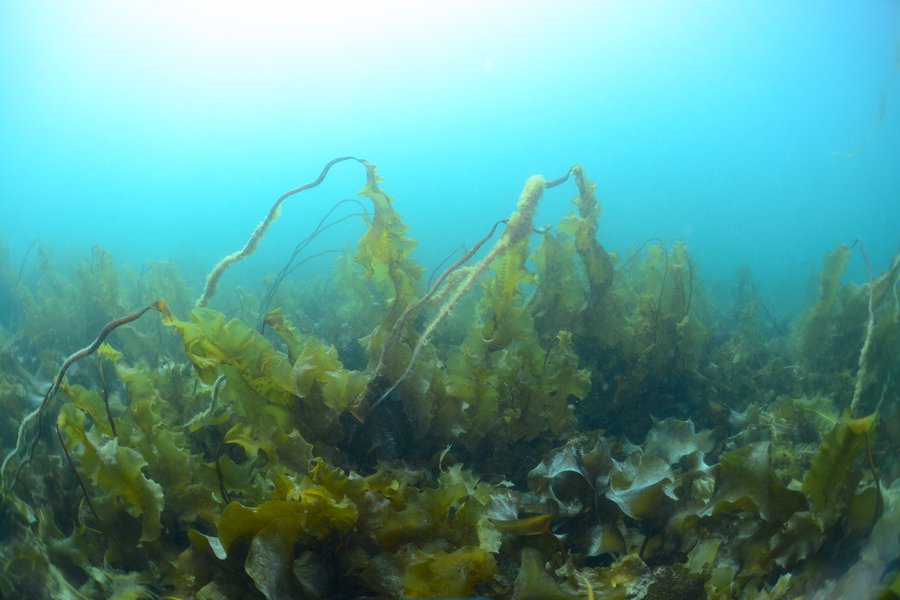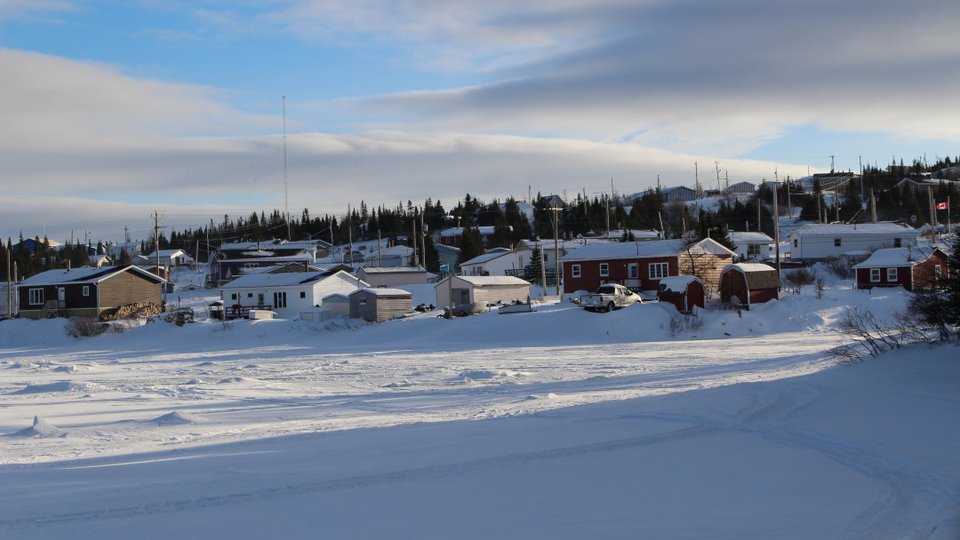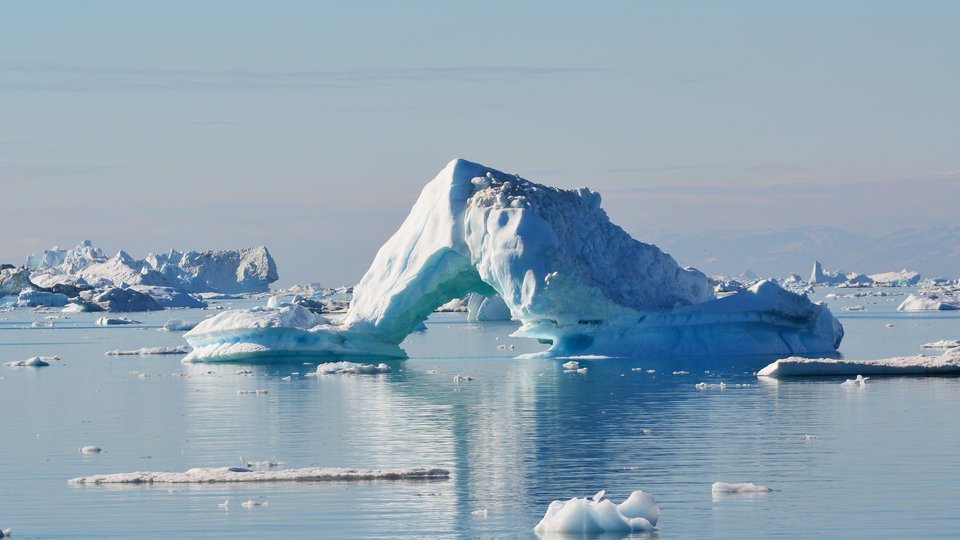
Kelp forests have been observed throughout the Arctic by Inuit and researchers for many years. However, because of challenging conditions we have until recently known very little about them. As sea ice cover decreases throughout Arctic regions, researchers have been able to study these underwater forests much more thoroughly.
Laura Castro De La Guardia is a Post-Doctoral researcher at the University of Manitoba working to better understand how kelp in the Arctic will be affected by decreasing sea ice cover, and in turn how these kelp forests will contribute to changing ecosystems in the region.
Her hypothesis suggests that environmental changes in the Arctic will benefit kelp production and she plans to explore, through climate modelling, what this could mean for future environmental conditions.
Kelp forests, just like their on-land counterparts, consume large amounts of carbon and support many ecosystems. Castro De La Guardia spoke with Arctic Focus about the potential outcomes of these environmental changes and how her research arrived at these outcomes.
Q: How is the amount of sea ice connected to the amount of kelp?
A: Our hypothesis is that with the loss of the sea ice we have more light reaching the sea floor, there is also warmer water, and because there is also more river run off there could be potential for more nutrients. More light, warmer waters and more nutrients all benefits the growth of kelp. So, the hypothesis suggests that the Arctic is becoming a potentially good habitat for kelp.
Kelp are macroalgae that lives attached to the sea floor. Like plants, kelp need light to grow. Currently in the Arctic and Subarctic the presence of sea ice acts a cap on the ocean. The sea ice reduces the amount of daylight reaching the ocean surface. At the same time, the sea ice growing can scour the sea floor in near-shore areas preventing kelp growth there. In deeper waters sea ice do not scour the sea floor, but light levels are low; the amount of light decreases with depth because light is absorbed by particles in the water and by the water itself.

Kelp forests around Southampton Island are a refuge and habitat to many species. (Photo: Ignacio Garrido)
Q: Where have you been collecting this data?
A: There was an expedition as part of the Southampton Island Ecosystem Project (SIMEP) in the year 2018 (called SIMEP2018 expedition) that went to Southampton Island in Northern Hudson Bay. They were the first ones to collect data around Southampton Island. They did have a kelp team onboard because they had noticed that there was kelp drifting in the open ocean. However, because of weather conditions they were unable to dive as much as planned. So, the next year in 2019, during the SIMEP2019 expedition there was better weather and they were able to do a much more thorough research of the kelp.
My research is part of the ACCES project (an international project focusing on the Arctic changing coasts: www.acces-arctic.com), and what is unique about this project is that we are linking not only the one region in Canada, but also many other regions of the Arctic, except for Russia. This allows us to have an exchange of data and understand more of how the kelp forests interact with their environment and vice versa.
This also allows us to understand and observe patterns that we use to then improve the models. Having more information about many of the regions in the Arctic can help us develop a model that is more receptive to the pan-arctic system rather than just the one specific area.
Q: What are you hoping to learn or achieve with the research in the long term?
A: I am hoping that I can use my knowledge of climate modelling so I can develop and input a new kelp model into the existing climate models. This would allow us to see how kelp forests may change in the future and what that may mean for the carbon storage.
Kelp forests are comparable to land forests. It offers a habitat to many animals and other plants that live on top of the kelp called epiphytes. The fact that the kelp forest is developing, and it could develop in the future because of the favoring conditions, could mean that the ecosystem around the coastal regions could improve a lot.
We don't have a kelp model, but we would like to add it. Right now, we have a phytoplankton model, the primary producers that float at the top of the ocean, but we don't have a model for the plants at the bottom of the ocean.

Example of a dense kelp forest at 5-10m depth. Location: Southampton Island. (Photo: Ignacio Garrido)
Q: What would this increased productivity mean for the ecosystem?
A: When I say increased productivity that means an increased growth of primary producers. Examples of primary producers arephytoplankton and macroalgae like kelp, and these primary producers are the base of the food chain and are thus responsible for feeding all small marine animals. So, an increase in primary producers will create a chain reaction and increase larger consumer in the end, which in this case could be the fish, whales, seals, etc.
Wildlife will benefit from the primary producers. But another aspect of it is that kelp also produce oxygen and consume carbon, so the more kelp grows the more carbon you are taking out and the Arctic Ocean has the potential to become a carbon sink. So that is another aspect that could potentially be beneficial.

Experimental Set-up for measuring primary production of Kelp. A tank with three chambers. From left to right: (1) chamber with light sensor (lightbulb looking instrument) and water circulation hoses, (2) chamber with a control bag consisting of a sealed bag filled with sea water and a temperature-oxygen sensor, but without the kelp, (3) chamber with the kelp inside of a sealed bag filled with sea water and a temperature-oxygen sensor.
Q: How is your data going to work towards developing a model?
My project focuses on the primary production of kelp. What we did was collect several samples of kelp, put them in bags and then measure how much oxygen they were consuming, and then from there we derived the primary production. So, my project will focus on trying to look at the primary production of kelp now, and then tying that to a model with other observations throughout the Arctic to essentially do a quick hypothesis or quick statement of how much productivity kelp offer to the Arctic.
The first goal is that the model will give me a value that is similar to the sample that we collected near Southampton Island in 2019. So, this will be the very first step when we have a model that is able to reproduce the biomass of kelp and also similar productivity, how fast does it grow. So that will be the very first step and then later on more equations can be integrated.
What we do as climate modellers is to experiment and play with the different factors of the Earth System to obtain a response and increase the detailed understanding of how one component can affect the variable of interest.





